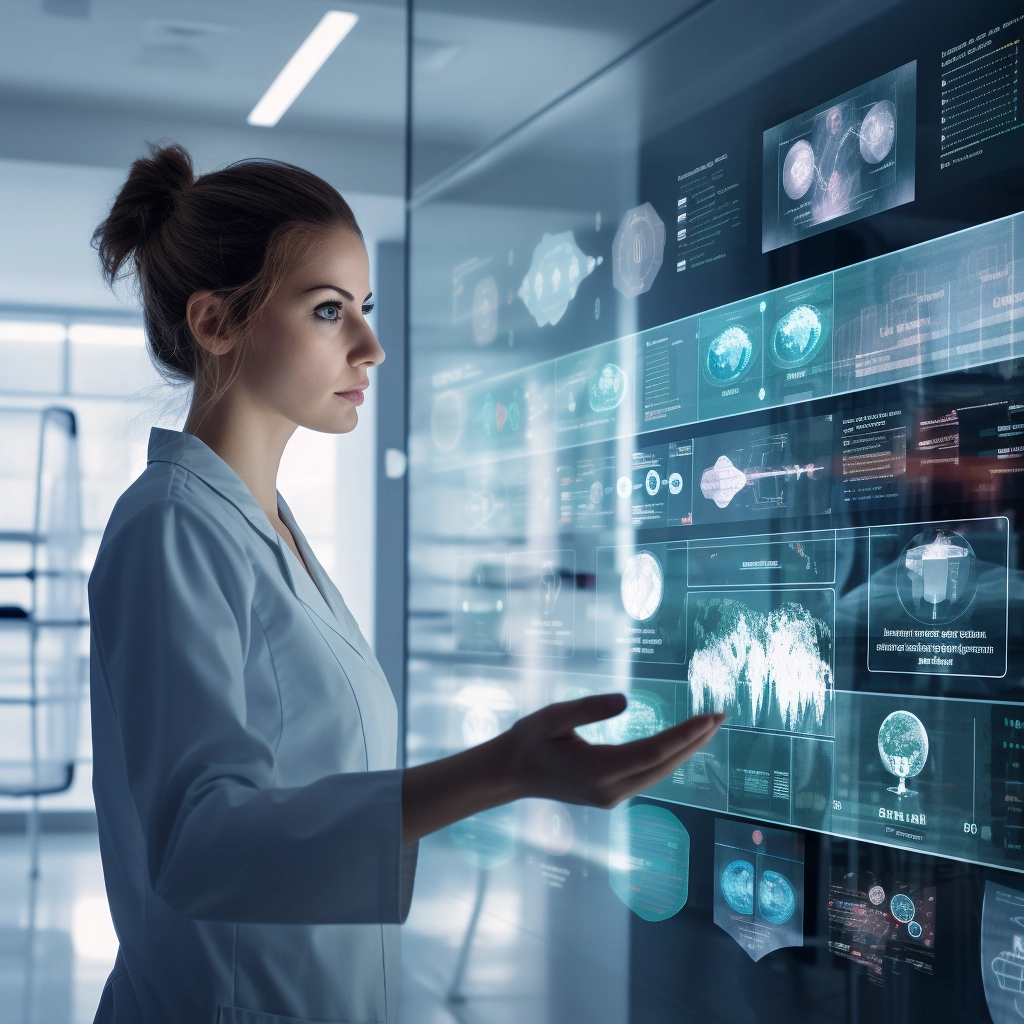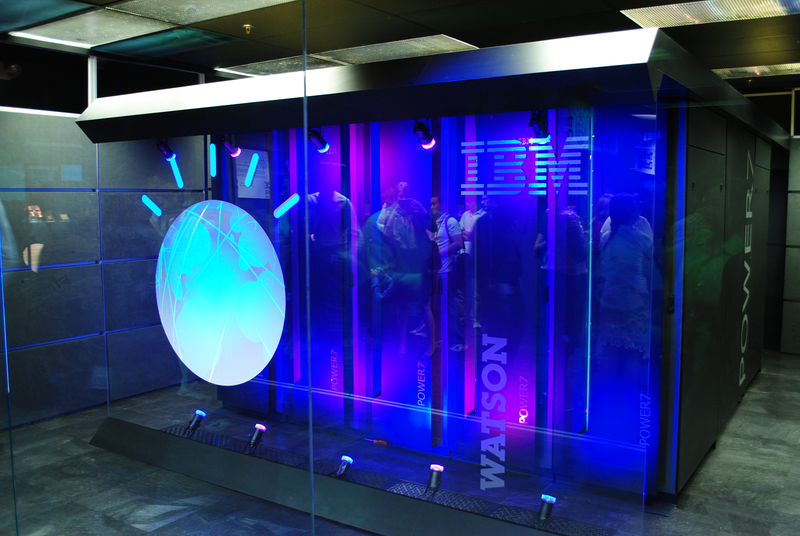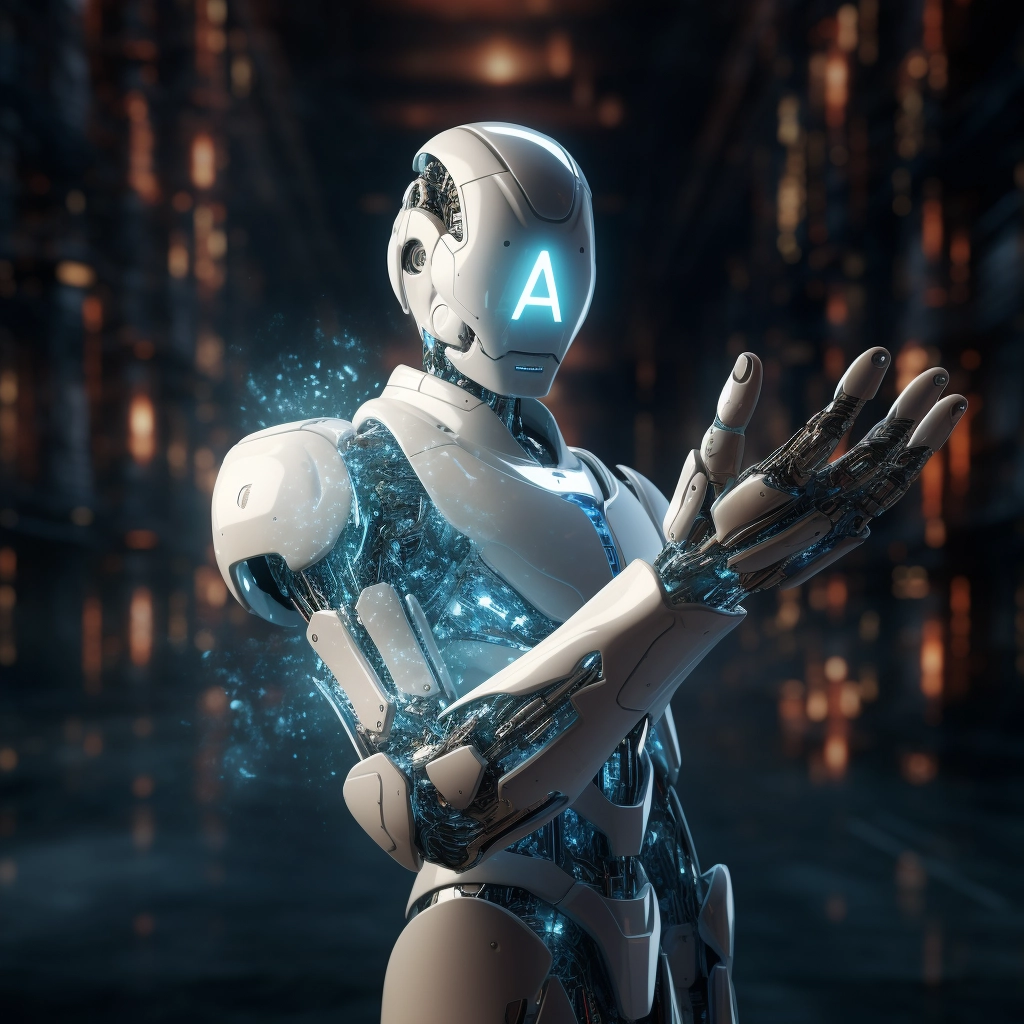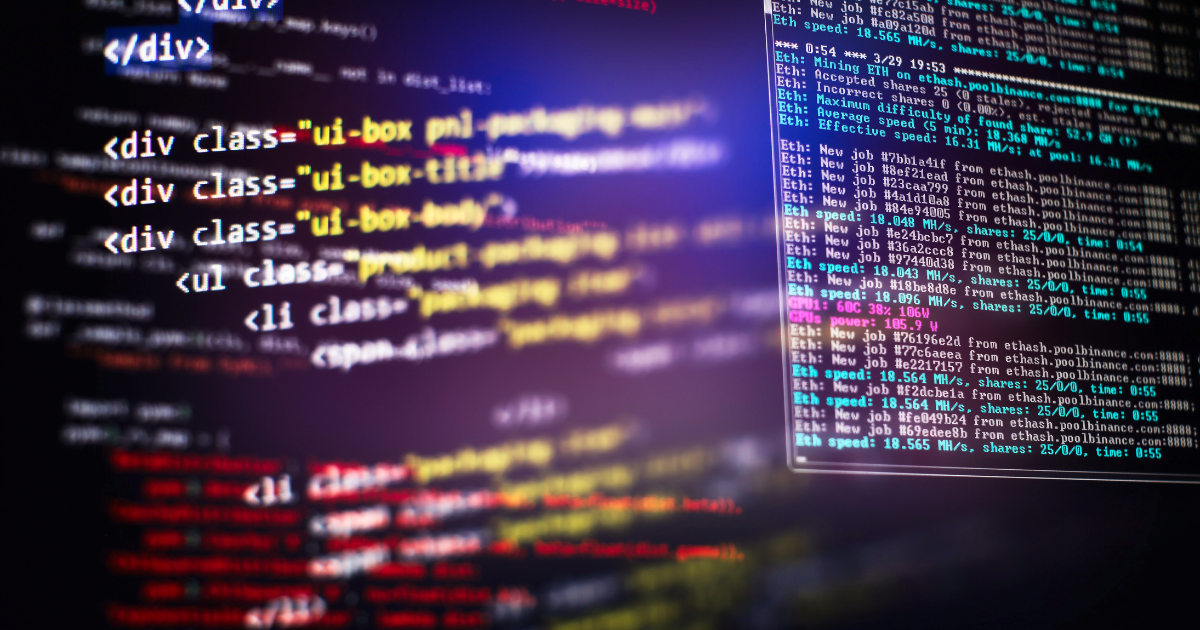What is AI Automation and Its Role in Streamlining Operations?
Artificial intelligence (AI) has become a transformative force in our modern world. From self-driving cars to voice-activated assistants, AI is revolutionizing how we live and work. One of the most promising applications of AI is in automation, where it has the potential to unlock human potential and transform workflows across various industries. So what is AI automation exactly?
AI automation refers to the use of AI and machine learning algorithms to automate tasks and processes, boosting productivity and efficiency in the workflow. By analyzing large amounts of data and learning from patterns, AI can perform repetitive and time-consuming tasks with accuracy and speed that would be impossible for humans alone.
Imagine a world where AI-powered systems seamlessly handle mundane tasks, allowing humans to focus on more complex and creative endeavors. In industries such as finance, healthcare, manufacturing, and customer service, AI automation has the power to streamline operations, reduce errors, and free up valuable time for professionals to tackle higher-level challenges.

By implementing AI automation, businesses can achieve higher productivity, as tasks are completed faster and more efficiently. This leads to increased output and a competitive edge in the market. Moreover, AI automation can also improve the overall quality of work by reducing human error and ensuring consistency throughout the workflow.
However, AI automation is not without its challenges. There are concerns about job displacement and the need for workers to acquire new skills in this shifting landscape. Furthermore, ethical considerations and the need to protect data privacy are crucial factors that need to be addressed when implementing AI automation systems.
In this article, we will explore the potential of AI automation to unlock human potential across various industries. We will delve deep into the benefits, tools, and technologies involved. We will examine real-world use cases and discuss the differences between AI and traditional automation methods. Additionally, we will look ahead to the future of work, where AI and humans collaborate to drive innovation and efficiency.
Key Takeaways:
- AI automation can boost productivity and efficiency in various industries.
- By automating repetitive tasks, professionals can focus on higher-level challenges.
- AI automation can lead to increased output and a competitive edge in the market.
- Job displacement and the need for acquiring new skills are challenges associated with AI automation.
- Ethical considerations and data privacy are crucial factors in implementing AI automation.
Understanding the Benefits of Artificial Intelligence in Automation
AI automation, powered by machine learning algorithms, is revolutionizing industries by streamlining processes and boosting productivity. By automating repetitive tasks, businesses can achieve greater efficiency and free up valuable time for more complex responsibilities.
Machine learning algorithms form the backbone of AI automation. These algorithms, which can learn and improve from data, enable systems to make decisions, perform tasks, and adapt in real time. By leveraging these algorithms, businesses can automate various processes and optimize workflows for maximum efficiency.
The benefits of AI automation are numerous. It allows organizations to:
- Automate tasks: AI automation eliminates the need for manual intervention in repetitive tasks, saving time and reducing the risk of errors.
- Increase productivity: By automating time-consuming tasks, employees can focus on high-value activities that require human expertise.
- Enhance efficiency: AI automation streamlines workflows, reduces bottlenecks, and speeds up processes, resulting in faster turnaround times and improved customer satisfaction.
- Improve accuracy: Machine learning algorithms can analyze vast amounts of data with precision, reducing the likelihood of human error and improving overall accuracy.
- Optimize resource allocation: By automating resource-intensive tasks, businesses can allocate resources more strategically, maximizing their efficiency and minimizing costs.
“AI automation is transforming the way businesses operate, enabling them to work smarter, not harder.”
From customer service chatbots that provide instant support to recommendation systems that personalize user experiences, AI automation has the potential to reshape industries across the board. It empowers businesses to stay competitive, increase productivity, and deliver services more efficiently than ever before.
AI Tools and Technologies
When it comes to AI automation, having the right tools and technologies can make all the difference. From natural language processing to deep learning and computer vision, various techniques and platforms like IBM Watson are revolutionizing workflows across industries.
Natural Language Processing
Natural Language Processing (NLP) is a branch of AI that focuses on the interaction between computers and human language. By analyzing and understanding text and speech, NLP tools enable the automation of tasks that involve language processing, such as chatbots and virtual assistants.
Deep Learning
Deep Learning is a subfield of AI that aims to mimic the human brain’s neural networks. It involves training artificial neural networks on vast amounts of data to learn patterns and make predictions or decisions. Deep learning techniques power applications like image recognition, speech recognition, and predictive analytics.
Computer Vision
Computer Vision is a technology that enables machines to see, interpret, and understand visual information. By utilizing AI algorithms, computer vision tools can automate tasks like facial recognition, object detection, and image classification. This technology has applications in industries ranging from healthcare to manufacturing.
With the right combination of AI tools and technologies, businesses can streamline their processes, improve accuracy, and transform the way they operate across various domains.
Now, let’s take a closer look at the role of AI and automation through an illustrative table:
| AI Tools and Technologies | Applications |
|---|---|
| Natural Language Processing | Chatbots, voice assistants, sentiment analysis |
| Deep Learning | Image recognition, speech recognition, predictive analytics |
| Computer Vision | Facial recognition, object detection, image classification |
As you can see from the table, these AI tools and technologies have diverse applications, and their integration into workflows can unlock immense potential for automation and efficiency.
Real-world Use Cases of AI Automation Across Industries

AI automation has emerged as a powerful tool across various industries, transforming workflows and accomplishing tasks without the need for human intervention. In this section, we will explore real-world examples of AI automation and its wide-ranging applications.
1. Customer Service and Support:
AI-powered chatbots are revolutionizing customer service and support, responding to customer queries and providing instant solutions. These virtual assistants can handle a high volume of requests, leading to faster response times and improved customer experience.
2. Manufacturing and Logistics:
AI automation is streamlining manufacturing and logistics processes, optimizing supply chain management, and reducing costs. Intelligent robots and drones are used for tasks such as material handling, inventory tracking, and warehouse management, improving efficiency and minimizing errors.
3. Healthcare and Medicine:
AI is playing a vital role in healthcare, assisting doctors in diagnosis, treatment planning, and patient monitoring. Machine learning algorithms analyze medical images, detect anomalies, and identify patterns for more accurate and timely medical interventions.
4. Financial Services:
AI automation is transforming the financial industry by automating repetitive tasks and improving efficiency. Financial institutions are leveraging AI to detect fraud, assess credit risk, and provide personalized recommendations to customers based on their financial behavior.
5. Creative Industries:
Generative AI has revolutionized the creative industries by producing original content without human intervention. From creating music compositions to generating realistic artwork, AI tools are assisting artists and designers, enhancing creativity, and pushing the boundaries of imagination.
“AI automation is reshaping industries and enabling organizations to achieve new levels of efficiency and productivity. By leveraging the power of AI, businesses can transform their operations and unlock unprecedented opportunities for growth and innovation.”
The Difference Between AI and Automation
When it comes to transforming business processes and increasing efficiency, both AI and automation play crucial roles. However, it’s important to understand the differences between the two concepts and how they are applied in various industries.
AI and Business Processes
Artificial Intelligence, or AI, involves the development of systems that can perform tasks that would typically require human intelligence. These tasks can range from natural language processing to complex decision-making processes. In the world of business, AI is utilized to analyze large amounts of data, predict future trends, and streamline operations.

AI applications are vast and cover multiple areas, including customer service, supply chain management, financial analysis, and more. By leveraging AI, businesses can gain valuable insights, automate routine tasks, and enhance decision-making processes for improved efficiency and productivity.
Automation in Business
Automation, on the other hand, focuses on the elimination of manual tasks and the use of technology to streamline processes. It involves the use of software, robots, or other technologies to perform repetitive tasks without human intervention. Automation can be applied across a wide range of industries, from manufacturing to logistics and beyond.
By implementing automation, businesses can reduce errors, accelerate production cycles, and achieve higher levels of consistency. It allows for the efficient allocation of resources, resulting in increased productivity and improved overall performance.
The Intersection of AI and Automation
While AI and automation are distinct concepts, they often intersect in practice. AI technologies can be integrated into automated systems to enhance their capabilities. For example, machine learning algorithms can be applied to automate decision-making processes, making them more efficient and accurate.
Moreover, AI can analyze vast amounts of data generated by automated systems, enabling businesses to uncover valuable insights and make data-driven decisions. This combination of AI and automation can unlock new opportunities for businesses to optimize their operations and gain a competitive edge.
The Differences in Application
The main difference between AI and automation lies in their application. AI is focused on replicating human intelligence and decision-making, while automation aims to streamline processes and eliminate manual tasks. While both concepts have the potential to revolutionize businesses, they address different aspects of workflows and operations.
In summary, AI is a powerful tool that enables businesses to gain insights, make predictions, and automate complex tasks. Automation, on the other hand, focuses on streamlining processes and eliminating manual tasks. By understanding the differences between AI and automation, businesses can strategically leverage these technologies to achieve optimal results and stay ahead in today’s rapidly evolving digital landscape.
| AI | Automation |
|---|---|
| Replicates human intelligence | Eliminates manual tasks |
| Applies machine learning algorithms | Uses technology to streamline processes |
| Analyzes data for insights and predictions | Reduces errors and increases consistency |
| Utilizes natural language processing | Accelerates production cycles |
The Future of Work: Automation and AI Technologies
In today’s rapidly evolving digital landscape, the future of work is being shaped by the advancements in AI technologies and automation. As businesses strive for greater efficiency and productivity, the integration of human intelligence with AI techniques is becoming increasingly crucial.
With AI and automation technologies, the way we work is undergoing a paradigm shift. It’s not just about replacing jobs; it’s about augmenting human capabilities and unleashing new possibilities.
AI technologies have the potential to automate repetitive and mundane tasks, allowing employees to focus on more strategic and creative endeavors. This symbiotic relationship between humans and machines opens up avenues for innovation and problem-solving, taking businesses to new heights.
The Role of Human Intelligence
While AI is capable of processing vast amounts of data and making predictions at unprecedented speeds, human intelligence brings a unique set of qualities to the table. Emotional intelligence, critical thinking, and complex decision-making are characteristics that remain vital in the workplace.
Humans possess a deep understanding of context, nuance, and empathy, which AI algorithms struggle to replicate. This combination of human insights and AI capabilities has the potential to deliver truly transformative results across industries.
AI Techniques Enabling Collaboration
AI techniques such as natural language processing, computer vision, and machine learning algorithms enable machines to understand, analyze, and learn from human behavior and patterns. By leveraging these techniques, AI can augment our capabilities rather than replace them.
Collaborative AI systems empower humans by providing intelligent suggestions, automating routine tasks, and delivering real-time insights. This enables employees to make data-driven decisions more efficiently, resulting in increased productivity and improved overall performance.
The Impact on the Workforce
As AI and automation continue to advance, the composition of the workforce will undergo significant changes. Some repetitive and low-skill jobs may be automated, freeing up human resources for more impactful and meaningful work.
However, this also necessitates the need to acquire new skills and adapt to the evolving technological landscape. Upskilling and reskilling programs will be crucial in preparing the workforce for a future where collaboration with AI becomes the norm.
A balance must be struck between harnessing the power of AI technologies and preserving the unique capabilities of human intelligence. By combining the best of both worlds, businesses can unlock unprecedented levels of innovation, efficiency, and growth.
| Benefits of AI and Automation Technologies in the Future of Work |
|---|
| Increased efficiency and productivity |
| Streamlined workflows and reduced manual efforts |
| Improved decision-making with real-time insights |
| Enhanced innovation and problem-solving capabilities |
| Opportunities for upskilling and reskilling |
Use of AI Automation: Challenges and Best Practices
Implementing AI automation can greatly increase efficiency in your workflows, but it also presents various challenges that need to be addressed. In this section, we will discuss the best practices to overcome these challenges and ensure a successful implementation.
1. Acquiring New Skills
One of the main challenges in implementing AI automation is the need to acquire new skills. As the use of artificial intelligence becomes more prevalent, there is a growing demand for professionals who can understand and work with AI technologies. It is essential to invest in training programs and upskilling your workforce to ensure they have the necessary skills to implement and manage AI automation effectively.
2. Ensuring Data Privacy
Data privacy is a crucial concern when implementing AI automation. With the use of AI technologies comes the collection and processing of large amounts of data. It is essential to establish robust data privacy measures to protect sensitive information and comply with regulations. Implementing proper data anonymization techniques, encryption, and access controls are some best practices to safeguard data privacy in AI automation.
3. Adapting to Change
Implementing AI automation requires a cultural shift within the organization. It is vital to create a supportive environment that encourages employees to embrace change and adapt to new technologies. Effective change management strategies, such as communication, training, and continuous support, can help employees transition smoothly and fully leverage the benefits of AI automation.
4. Integrating AI into Existing Systems
Integrating AI automation into existing systems can be challenging, particularly when dealing with legacy systems that were not designed to accommodate AI technologies. It is crucial to evaluate your current infrastructure and identify any necessary upgrades or modifications to ensure seamless integration. Collaborating with technology vendors and experts can help streamline the integration process and overcome any technical hurdles.
5. Monitoring and Optimization
Once AI automation is implemented, continuous monitoring and optimization are essential to ensure its effectiveness and efficiency. Regularly tracking AI performance, analyzing data outputs, and making necessary adjustments will help maximize the benefits of AI automation. Implementing tools and processes for monitoring and optimization is a best practice to stay ahead and ensure ongoing success.
Best Practices for Implementing AI Automation:
- Invest in training and upskilling to acquire the necessary AI skills.
- Establish robust data privacy measures to protect sensitive information.
- Create a supportive environment for employees to embrace change.
- Evaluate and upgrade existing systems to accommodate AI integration.
- Implement tools for monitoring and optimization to ensure ongoing success.
Implementing AI automation can be a transformative process, revolutionizing your workflows and increasing efficiency. By addressing the challenges and following these best practices, you can unlock the full potential of AI automation and drive your business forward.
| Challenges | Best Practices |
|---|---|
| Acquiring new skills | Invest in training and upskilling |
| Ensuring data privacy | Establish robust privacy measures |
| Adapting to change | Implement effective change management strategies |
| Integrating AI into existing systems | Evaluate and upgrade infrastructure |
| Monitoring and optimization | Implement tools for ongoing monitoring and optimization |
Wrapping Up the Evolution of AI
In conclusion, the power of AI automation cannot be underestimated. By implementing automated systems, businesses across various industries can reduce the need for manual processes and significantly improve efficiency. The integration of artificial intelligence into workflows can revolutionize the way tasks are accomplished, boosting productivity and streamlining operations.
Automation tools and technologies, such as IBM Watson, provide the means to leverage AI capabilities effectively. Machine learning algorithms automate repetitive tasks, allowing employees to focus on higher-value activities. Natural language processing and deep learning techniques enable automation in areas like customer support and data analysis.

Real-world use cases demonstrate the transformative effects of AI automation. From manufacturing to healthcare, AI can accomplish tasks without the need for human intervention. Generative AI even enables creative tasks, such as generating artwork and music. These examples showcase the immense potential of AI in revolutionizing various industries.
Looking to the future, AI and automation technologies will continue to shape the workplace. While human intelligence remains essential, AI techniques can augment and enhance human capabilities, driving innovation and creating new opportunities. However, organizations must overcome challenges and adopt best practices to ensure successful implementation, including addressing data privacy concerns and acquiring the necessary skills.
As we embrace the future of AI and its evolving role in the workplace, AI Optiflow stands at the forefront of this technological revolution. Our expertise in AI-driven solutions empowers businesses to navigate the complexities of digital transformation effortlessly. Whether it’s enhancing operational efficiency, driving customer satisfaction, or pioneering innovations, AI Optiflow is your ideal partner. We welcome you to contact us and explore how we can tailor our cutting-edge AI solutions to meet your unique needs, propelling your business toward unprecedented success.
FAQ
Q: What is AI Automation?
A: AI Automation refers to the use of artificial intelligence and machine learning to automate tasks and processes that were traditionally performed by humans. It involves the use of AI models and robotic process automation to streamline and optimize workflows.
Q: How is AI Automation impacting the future of work?
A: AI Automation is transforming the future of work by enabling organizations to automate repetitive and mundane tasks, thus freeing up human labor to focus on more strategic and creative endeavors. It is also being used to enhance productivity and efficiency in various industries.
Q: How does AI Automation differ from traditional automation?
A: AI Automation combines AI with traditional automation techniques, such as robotic process automation, to create more intelligent and adaptive systems. It uses AI techniques, including machine learning and natural language processing, to make decisions and perform tasks autonomously.
Q: What are the benefits of using AI Automation in the workplace?
A: AI Automation can help organizations improve operational efficiency, reduce errors, and enhance decision-making processes. It can also lead to cost savings and enable employees to focus on high-value tasks that require human judgment and creativity.
Q: How is AI Automation being implemented in various industries?
A: AI Automation is being adopted across various industries, including finance, healthcare, manufacturing, and customer service. It is being used to automate repetitive processes, analyze large volumes of data, and enhance customer interactions through chatbots and virtual assistants.
Q: What role does AI play in intelligent automation?
A: AI plays a crucial role in intelligent automation by enabling systems to learn from data, adapt to new scenarios, and make autonomous decisions. Intelligent automation combines AI with automation to create more flexible and self-improving systems.
Q: Can AI Automation help in digital transformation initiatives?
A: Yes, AI Automation is an integral part of digital transformation efforts. It enables organizations to digitize and automate processes, harness new data sources, and create more agile and responsive operations.
Q: Is AI Automation replacing human jobs?
A: While AI Automation is automating certain tasks, it is also creating new opportunities for human workers to focus on higher-value and cognitive tasks. It is not about replacing human labor but about augmenting and enhancing human capabilities.
Q: How can organizations leverage AI Automation to gain a competitive edge?
A: Organizations can leverage AI Automation to gain a competitive edge by streamlining operations, improving customer experiences, and accelerating innovation. It can help them stay ahead in an increasingly competitive and rapidly evolving business landscape.
Q: What are some common use cases for AI Automation?
A: Common use cases for AI Automation include automating customer support with chatbots, optimizing supply chain processes using AI predictive analytics, and automating repetitive administrative tasks in various departments, such as finance and human resources.



